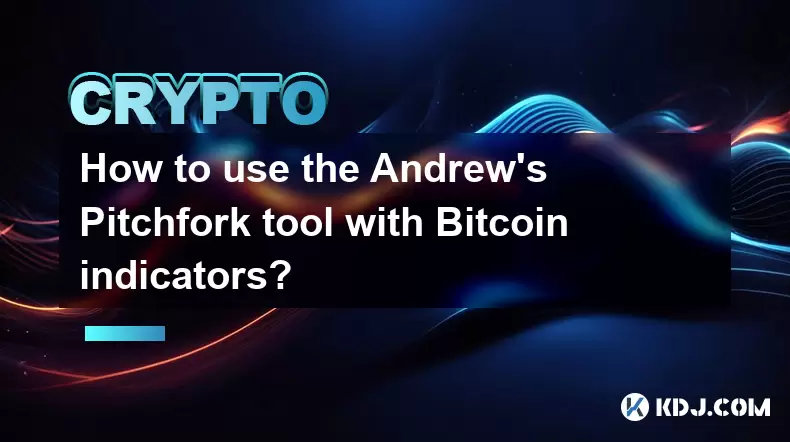-
 Bitcoin
Bitcoin $111,259.5910
2.32% -
 Ethereum
Ethereum $2,789.1977
6.17% -
 Tether USDt
Tether USDt $1.0006
0.06% -
 XRP
XRP $2.4172
3.88% -
 BNB
BNB $671.6585
1.21% -
 Solana
Solana $157.1336
2.90% -
 USDC
USDC $1.0001
0.02% -
 TRON
TRON $0.2913
1.52% -
 Dogecoin
Dogecoin $0.1809
5.04% -
 Cardano
Cardano $0.6213
4.40% -
 Hyperliquid
Hyperliquid $41.7572
6.29% -
 Sui
Sui $3.1623
8.35% -
 Bitcoin Cash
Bitcoin Cash $513.7819
1.17% -
 Chainlink
Chainlink $14.2966
1.64% -
 Stellar
Stellar $0.2904
9.82% -
 UNUS SED LEO
UNUS SED LEO $8.9624
-0.86% -
 Avalanche
Avalanche $19.4161
5.41% -
 Hedera
Hedera $0.1754
8.17% -
 Shiba Inu
Shiba Inu $0.0...01243
4.58% -
 Toncoin
Toncoin $2.8743
2.25% -
 Litecoin
Litecoin $90.6242
3.12% -
 Monero
Monero $328.7483
3.34% -
 Polkadot
Polkadot $3.6433
5.06% -
 Dai
Dai $1.0002
0.02% -
 Ethena USDe
Ethena USDe $1.0011
0.06% -
 Uniswap
Uniswap $8.3418
8.66% -
 Bitget Token
Bitget Token $4.4331
2.68% -
 Pepe
Pepe $0.0...01102
8.17% -
 Aave
Aave $297.1705
-0.69% -
 Pi
Pi $0.4712
1.31%
How to use the Andrew's Pitchfork tool with Bitcoin indicators?
Andrew's Pitchfork helps Bitcoin traders identify dynamic support/resistance levels, best used with RSI, MACD, and volume for accurate trend analysis.
Jul 10, 2025 at 05:49 pm

Understanding the Andrew's Pitchfork Tool in Cryptocurrency Trading
The Andrew's Pitchfork is a technical analysis tool used by traders to identify potential support and resistance levels, trend channels, and reversal points. In the context of Bitcoin trading, it can be especially useful due to the asset’s high volatility and strong trend-following behavior. This tool helps traders visualize price action within a channel formed by three key pivot points—typically two swing lows (or highs) and one median point.
To begin using the Andrew's Pitchfork, you must first identify three significant price swings on the Bitcoin chart. These are usually labeled as Point A (a major low or high), Point B (the subsequent high or low), and Point C (another swing in the opposite direction but not exceeding Point A). Once these points are plotted, the pitchfork forms with parallel lines extending from each of the three points, creating a channel that can guide your trading decisions.
Integrating Bitcoin Indicators for Enhanced Accuracy
While the Andrew's Pitchfork provides valuable visual guidance, combining it with Bitcoin-specific indicators enhances its predictive power. Commonly used indicators include the Relative Strength Index (RSI), Moving Average Convergence Divergence (MACD), and Volume Profile. These tools help confirm whether the price is likely to respect the pitchfork’s boundaries or break through them.
For instance, when Bitcoin’s price approaches the upper rail of the pitchfork, checking if the RSI is above 70 might indicate overbought conditions, suggesting a possible pullback toward the median line. Conversely, if the price hits the lower rail while RSI dips below 30, this could signal oversold territory, increasing the probability of a bounce.
Another critical indicator is the MACD, which helps assess momentum. If the MACD line crosses above the signal line near the lower rail of the pitchfork, it may validate a bullish reversal. Similarly, a bearish crossover near the upper rail could suggest a sell opportunity.
Step-by-Step Guide to Applying Andrew's Pitchfork with Bitcoin Charts
- Open your preferred cryptocurrency trading platform or charting software, such as TradingView, Binance, or CoinMarketCap Pro.
- Navigate to the Bitcoin/USDT pair and select a time frame suitable for your trading strategy (e.g., 1-hour, 4-hour, or daily).
- Locate three consecutive significant swing points: two peaks/troughs in one direction and a counter-swing point in between.
- Select the Andrew's Pitchfork drawing tool from the charting menu.
- Click on the first swing point (Point A), drag to the second swing point (Point B), then click on the counter-swing point (Point C) to complete the pitchfork structure.
- Observe how Bitcoin’s price interacts with the pitchfork lines over time.
This process allows traders to anticipate areas where Bitcoin may find support or resistance. When combined with volume spikes or candlestick patterns like doji or engulfing candles near these lines, the signals become more reliable.
Using Pitchfork Lines as Dynamic Support and Resistance
In Bitcoin trading, static horizontal support and resistance levels often fail due to the market’s dynamic nature. The Andrew's Pitchfork, however, offers dynamic support and resistance lines that evolve with the trend. These lines adjust according to the slope of the trend, making them particularly effective in trending markets.
When Bitcoin is in an uptrend, the lower rail of the pitchfork often acts as a re-entry point for long positions. Traders can look for confluence with other tools like the 20-period Exponential Moving Average (EMA) to further filter entries. If the price bounces off the lower rail and the EMA simultaneously, it strengthens the trade setup.
Conversely, during downtrends, the upper rail serves as a potential shorting zone. If the RSI shows divergence at this level—such as higher highs in price but lower highs in RSI—it suggests weakening momentum and a probable reversal.
It’s crucial to note that not all touches result in reversals. Sometimes, the price will pierce a rail temporarily before returning to the median line. Therefore, patience and confirmation via candlestick closes beyond the rails are essential.
Combining Volume Analysis with Andrew's Pitchfork Signals
Volume plays a pivotal role in validating any technical signal, including those derived from the Andrew's Pitchfork. In the realm of Bitcoin trading, sudden spikes or drops in volume near the pitchfork lines can offer early warnings about potential trend changes.
If Bitcoin’s price approaches the upper rail of the pitchfork and coincides with a sharp increase in selling volume, it may indicate institutional-level profit-taking or a bearish shift. On the other hand, a surge in buying volume near the lower rail can suggest accumulation by large players, hinting at a possible bounce.
Using tools like Volume Profile Visible Range (VPVR) alongside the pitchfork helps identify key price zones where significant trading activity has occurred. If the price returns to a previously heavy volume area near a pitchfork rail, the likelihood of a reaction increases substantially.
Additionally, monitoring on-chain metrics like exchange inflows/outflows or whale movements can provide deeper insight into whether the pitchfork-based signals align with macro-level sentiment shifts in the Bitcoin market.
Frequently Asked Questions (FAQ)
What is the best time frame to use Andrew's Pitchfork with Bitcoin?
The effectiveness of Andrew's Pitchfork varies depending on the trader’s strategy. Day traders may prefer 1-hour or 4-hour charts for quicker signals, while swing traders often rely on daily or weekly charts for stronger, more reliable trend channels.
Can Andrew's Pitchfork be used in sideways or ranging Bitcoin markets?
Yes, although less common, the pitchfork can still be applied in ranging markets by identifying smaller swing points within the consolidation phase. However, its strength diminishes in highly choppy or non-trending environments.
How accurate is Andrew's Pitchfork when used alone for Bitcoin trading?
While the pitchfork is a powerful visual tool, relying solely on it may lead to false signals. It works best when combined with complementary indicators like RSI, MACD, and volume analysis to improve accuracy and reduce risk.
Is Andrew's Pitchfork applicable to altcoins as well?
Yes, the pitchfork technique is not exclusive to Bitcoin and can be applied to any cryptocurrency that exhibits trending behavior. However, due to increased volatility and lower liquidity in some altcoins, results may vary compared to major assets like BTC.
Disclaimer:info@kdj.com
The information provided is not trading advice. kdj.com does not assume any responsibility for any investments made based on the information provided in this article. Cryptocurrencies are highly volatile and it is highly recommended that you invest with caution after thorough research!
If you believe that the content used on this website infringes your copyright, please contact us immediately (info@kdj.com) and we will delete it promptly.
- DNA Coin, Biotech Streaming, and Real-World Assets: A New Frontier?
- 2025-07-10 22:30:13
- Transak, HYPE Token, and the Hyperliquid Ecosystem: A Deep Dive
- 2025-07-10 23:10:13
- Gasless L2 Revolution: Status Network's Sustainable Funding Model
- 2025-07-10 23:10:13
- SPX6900 and the Meme Coin Mania: Riding the Crypto Wave
- 2025-07-10 23:30:13
- FTX Creditors, Bankruptcy Claims: A Comeback Story?
- 2025-07-10 22:50:12
- Bit Mining's Solana Shift: A New Era for Token Treasuries?
- 2025-07-10 22:50:12
Related knowledge

What is the significance of the 21-week EMA in a Bitcoin bull market?
Jul 10,2025 at 06:56pm
Understanding the 21-Week EMA in Cryptocurrency AnalysisThe 21-week Exponential Moving Average (EMA) is a technical indicator widely used by traders a...

How to identify a volatility contraction pattern on Bitcoin using indicators?
Jul 07,2025 at 07:28am
What is a Volatility Contraction Pattern in Bitcoin Trading?A volatility contraction pattern refers to a phase where the price movement of an asset, s...

Do indicators work better on a logarithmic or linear scale for Bitcoin's long-term chart?
Jul 08,2025 at 01:42pm
Understanding Chart Scales in Cryptocurrency TradingIn cryptocurrency trading, particularly for analyzing Bitcoin's long-term trends, chart scales pla...

What is the Woodies CCI indicator and can it be used for Bitcoin?
Jul 04,2025 at 05:14pm
Understanding the Woodies CCI IndicatorThe Woodies CCI indicator is a variation of the traditional Commodity Channel Index (CCI), which was originally...

How to use indicators to trade the opening range breakout for Bitcoin CME futures?
Jul 05,2025 at 07:35pm
What Is the Opening Range Breakout Strategy?The opening range breakout (ORB) strategy is a popular trading technique used in both traditional markets ...

How to use the Relative Vigor Index (RVI) for Bitcoin trading?
Jul 07,2025 at 02:00pm
Understanding the Relative Vigor Index (RVI)The Relative Vigor Index (RVI) is a technical analysis tool used to assess the strength of price movements...

What is the significance of the 21-week EMA in a Bitcoin bull market?
Jul 10,2025 at 06:56pm
Understanding the 21-Week EMA in Cryptocurrency AnalysisThe 21-week Exponential Moving Average (EMA) is a technical indicator widely used by traders a...

How to identify a volatility contraction pattern on Bitcoin using indicators?
Jul 07,2025 at 07:28am
What is a Volatility Contraction Pattern in Bitcoin Trading?A volatility contraction pattern refers to a phase where the price movement of an asset, s...

Do indicators work better on a logarithmic or linear scale for Bitcoin's long-term chart?
Jul 08,2025 at 01:42pm
Understanding Chart Scales in Cryptocurrency TradingIn cryptocurrency trading, particularly for analyzing Bitcoin's long-term trends, chart scales pla...

What is the Woodies CCI indicator and can it be used for Bitcoin?
Jul 04,2025 at 05:14pm
Understanding the Woodies CCI IndicatorThe Woodies CCI indicator is a variation of the traditional Commodity Channel Index (CCI), which was originally...

How to use indicators to trade the opening range breakout for Bitcoin CME futures?
Jul 05,2025 at 07:35pm
What Is the Opening Range Breakout Strategy?The opening range breakout (ORB) strategy is a popular trading technique used in both traditional markets ...

How to use the Relative Vigor Index (RVI) for Bitcoin trading?
Jul 07,2025 at 02:00pm
Understanding the Relative Vigor Index (RVI)The Relative Vigor Index (RVI) is a technical analysis tool used to assess the strength of price movements...
See all articles


























![Bitcoin is about to plummet and get 9-7W long-term short orders [Chainblade’s latest market BTC technical analysis] July 10, 2025 Bitcoin is about to plummet and get 9-7W long-term short orders [Chainblade’s latest market BTC technical analysis] July 10, 2025](/uploads/2025/07/10/cryptocurrencies-news/videos/bitcoin-plummet-w-term-short-chainblade-market-btc-technical-analysis-july/686f8f4c58e52_image_120_90.webp)






























































